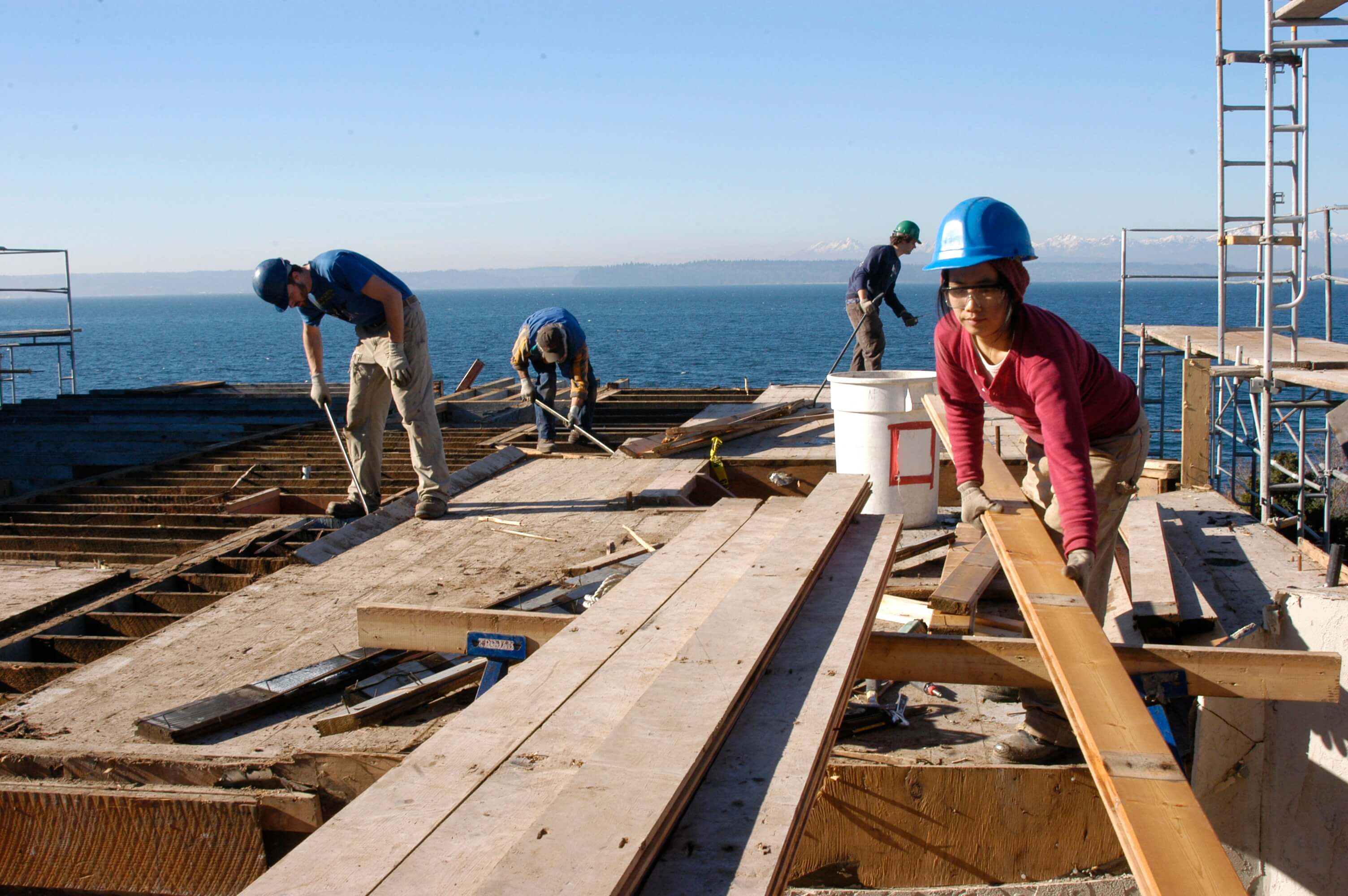
The RE Store was born in 1993 from the idea that unwanted building materials needn’t be sent to the landfill. Shortly after we first opened the doors, our salvage crew was out in the field, working with local contractors and community members to assist with building deconstruction and salvage materials from construction and demolition sites across the state.
Deconstruction basics
Building deconstruction refers to the process of taking apart a building piece-by-piece for the purpose of reuse and recycling. Deconstruction is also referred to as green demolition, salvage, or architectural salvage. Deconstruction has been around since humans first began to build structures. Why harvest new materials when you can reuse old materials? But around the time of the Great Depression, governments and manufacturers began to utilize the idea of planned obsolescence to lift economies out of depression. This meant that buildings were demolished en-masse in order to make way for new construction projects.
In the early 1990’s, with the rise of sustainable practices, building deconstruction began gaining popularity as a responsible alternative to traditional demolition. Where traditional demolition uses heavy machinery to smash and wreck, modern deconstruction uses a skilled crew to save, reuse, and recycle as much material as possible.
Perfectly good flooring, cabinets, trim, doors and windows are often destroyed in the demolition process, but deconstruction can save these materials for reuse, and recycle almost everything else that can’t be saved. Older homes and buildings are made of lumber that is literally irreplaceable, milled decades ago from old growth forests that grew untouched for hundreds of years. Old growth lumber is invaluable, as it is nearly impossible to find today, and makes for an unbeatable building material: it is beautiful enough for fine woodworking, but it’s also stronger and more resistant to fire, bug damage, rot, and fungus than most lumber used in construction today.
But really, the main difference between deconstruction and demolition is how building materials are regarded. Demolition regards unwanted material as junk, trash, or, just stuff. Deconstruction recognizes the inherent value in this material. It recognizes the labor required to harvest raw materials, the fuels used to transport it to manufacturing facilities, the labor and materials required to transform it into a useable resource, the skilled hands that installed it, and so on. Deconstruction is a way to honor this past effort, and ensure that it’s not for naught.
Decon diaries: the series
There’s so much more to building deconstruction than what it is and the differences when compared to demolition. This is the first in a multi-post series that will dive into the interesting world of deconstruction. We invite you to follow along. As we add more to this series, click here to see the whole series to learn about successes, tools used, the permitting process and more.
